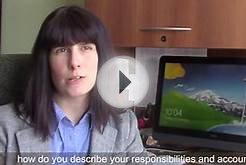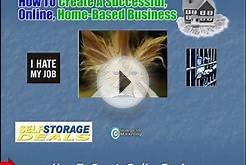Budweiser has come up trumps again with its latest ad. Not only has it got half the population shrieking "Wassuuup", it has also spawned a couple of spoof ads on the Internet and has aligned its image with mainstream culture. It is a good example of successful marketing that has created a theme and engaged with its audience.
However, if you're not one of the big guns like Budweiser, Levis or Coca Cola, then this kind of approach can spell disaster. The slickest campaign in the world won't generate results, unless people know what the actual service or product is, as many dotcoms have found to their detriment.
"The biggest mistake made by many of the early Internet companies is that they didn't talk about what the brand was, " explains Jonathan Cowan, marketing director at gardening site Greenfingers.com. "Advertising agencies were taking advantage of them with generic advertising rather than brand advertising."
Many of the marketing campaigns were too clever by half and left consumers in the dark about what the selling point was. Take boo.com. Everyone agrees it was wacky, catchy marketing, but it didn't actually say that it was a site for buying clothes. Marketers reel off lists of campaigns that they think make this mistake - breathe.com and Freeserve's television ads, and the latest Egg campaign - they all omitted to tell people why they should use their service.
The lesson here is that any company that is launching itself or a new product needs to create a brand vision. The next step is to establish which medium will best communicate this vision to the target audience.
"Television is particularly useful if you're looking at mass market consumer activities, " says Drew Durning, who runs marketing consultancy deciBel. "The trouble is that starting costs are very high. At the very least, it costs £10-£15, 000 to produce a commercial that is very simple, but you can spend hundreds of thousands of pounds."
Television is good for brand building and establishing a presence. Many companies launch simultaneous or subsequent press, poster and billboard campaigns. Think of lastminute.com - you can hardly board a bus, tube or taxi without being bombarded with its message.
Press coverage, posters and direct mail are also traditional marketing methods that can build a brand. But now, of course, marketers have another tool at their disposal - the Web.
It is becoming widespread practice to reach an audience via the Internet, be it with Web sites, banner ads, e-mail offerings or strategic partnerships. Once a person is on your site, you can direct them to areas of interest with relevant information and click throughs. "When someone comes onto my site I can track when they come to me, how often, where they go and what they have spent, " explains Cowan. "And from this I can construct a profile of them and tailor my offerings."




![[FREE] How to Create an ONLINE Minecraft Server!! NO](/img/video/free_how_to_create_an_online.jpg)





